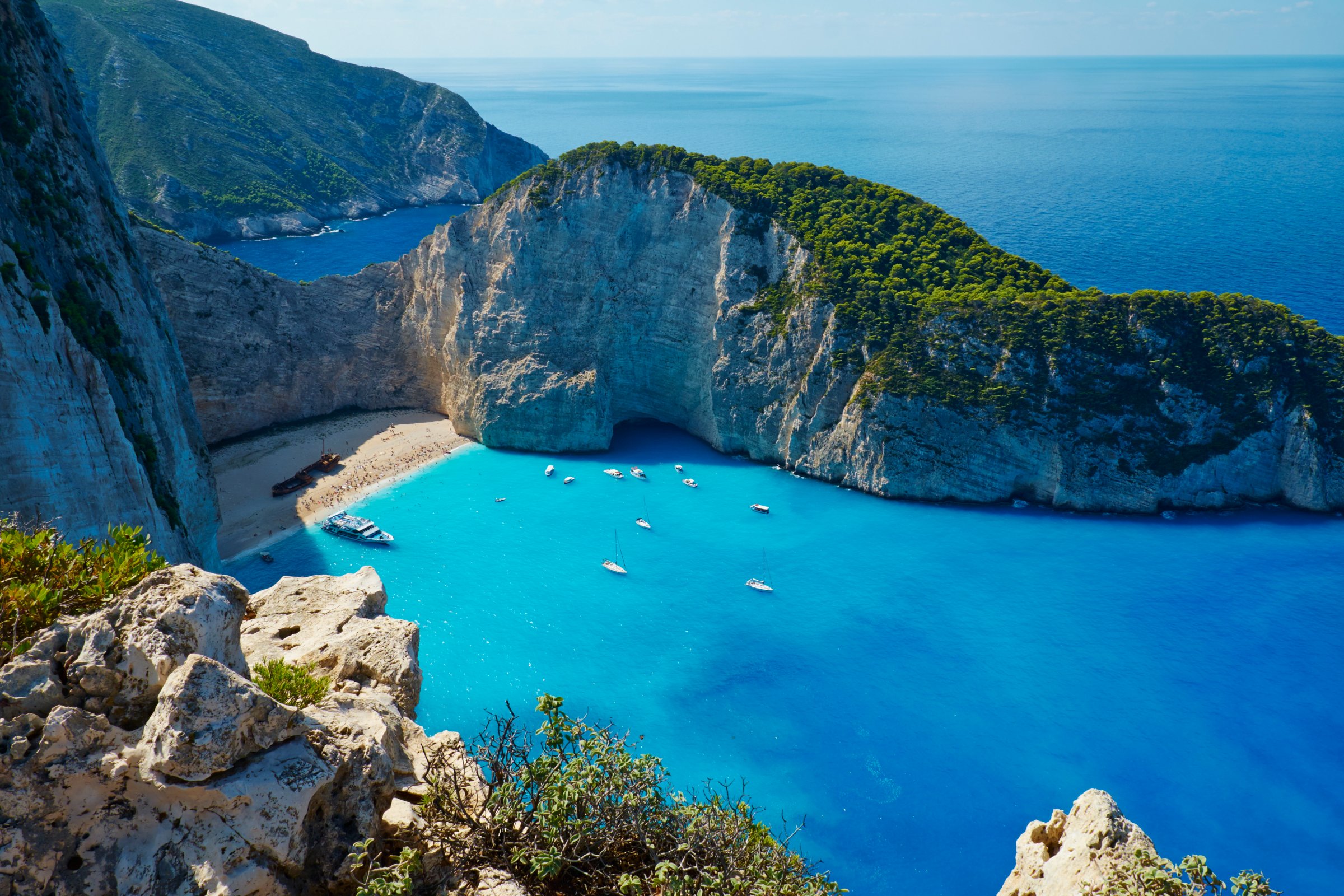
First-timers often describe their trip to “the Greek Islands,” as if they were one monolithic entity, easily popped into and out of and in between, like boutiques in a mall. It’s only once a visitor gets to know the country that the magnitude and diversity of the archipelagos becomes clear. The truth is that there are over 200 inhabited islands in Greece — and over 6,000 isles of varying sizes all together. Of the islands with residents, each has its own character, from the whitewashed cave homes of the Cyclades to the lush, green Italianate Ionians, to the Dodecanese capped with Crusader castles.
For the most part, the islands are divided into six main island groups, plus a significant stand-alone, Crete. It’s easier to travel between islands within one group than to archipelago-hop, although that can be done. (For example, if you want to go between Mykonos and Santorini in the Cyclades, there are multiple ferry and hydrofoil options in high season, but to get from Santorini to Corfu, in the Ionian, you’ll need to fly or sail into Athens, then fly to Corfu.) See our handy tip sheet below to find the island(s) that sound best for your next vacation.
Read More: Why Your Next Flight Might Smell Better
Getting Around Greece
By Air: Twenty-five islands have their own airports, all served from Athens by Olympic Airways and Aegean Airways, two domestic carriers that have merged. Eight are international airports that are also served by charters and European carriers such as British Airways, Air France, and EasyJet in summer. Although many of the islands have several flights a day in high season, the planes fill up quickly; aim to book four months ahead. Every single domestic flight is under an hour from Athens (keep in mind that the land mass of Greece is slightly smaller in size to the state of Alabama).
Read More: A Guide to the Best Frequent Flier Programs of 2017
By Sea: All large islands, and many small ones, are served by ferries, both of the slow and fast variety, from multiple lines included Blue Star, Aegean Speed Lines and Minoan. Find tickets to your chosen island at aggregate sites such as greekferries.gr or a travel agency such as Dolphin Hellas. Ferries don’t fill up as quickly as the flights do; you can often get a ticket the day before, but it’s always a good idea to book as soon as you know your itinerary, especially during peak times like Easter or August. A faster option for sea travel is a hydrofoil or catamaran—companies include Hellenic Seaways and Hellas Speed Cat. (Summer schedules aren’t released until spring.) While it’s always smart to secure tickets once you know when you’re traveling, it’s not necessary to book too far ahead unless you’re traveling at peak times or in a large group.
By Car: The major car agencies operate out of Eleftherios Venizelos in Athens and most island airports. It is possible to “drive” to an island by taking a car ferry, and since some islands are not frequently served by ferries leaving from Athens, you may have to, for example, arrive in the Athens airport, drive a rental car to the town of Volos port of Agios Konstantinos in central Greece, and sail to the islands of the Sporades. As in the rest of Europe, most car rentals are manual shift; automatics are more expensive and rare and must be booked well in advance. Here’s a work-around: if you’re just one or two people traveling together, a Smart car is inherently automatic, easy to find, affordable, and costs less to take on a ferry because of its teeny size.
When to Go
June or September are ideal for nicer weather and lower crowds. In high season (mid-June to mid-Sept, roughly, although on more remote islands, it’s really just August that gets busy), you’ll have more ferry routes and open restaurants and beach bars to choose from, but more visitors to compete with and higher prices to pay. Each island group has its own weather to look into—Crete is warmest year-round, so a great choice for late fall or winter—and while some islands, such as Hydra, are full of locals and see tourists year-round, others, such as Santorini, get very quiet come winter. Culturally speaking, Orthodox Easter is a fascinating time to visit Greece; each island, town, and village celebrates in its own way with religious parades, firecrackers, and revelry. Dates can vary from early April to early May—the later Easter falls, the better the weather.
Read More: Here’s Your Chance to Name an Island After Yourself
For a pupu platter of Greek islands, a cruise is an introductory option that can give you an idea of where you like to go next (we like Sea Dream, Seabourn, Wind Star, and Star Clippers. If you want a more in-depth look at the country, but like the idea of someone else doing all the planning, consider a location-specific travel agency such as True Greece.
This article originally appeared on TravelAndLeisure.com
More Must-Reads from TIME
- Why Biden Dropped Out
- Ukraine’s Plan to Survive Trump
- The Rise of a New Kind of Parenting Guru
- The Chaos and Commotion of the RNC in Photos
- Why We All Have a Stake in Twisters’ Success
- 8 Eating Habits That Actually Improve Your Sleep
- Welcome to the Noah Lyles Olympics
- Get Our Paris Olympics Newsletter in Your Inbox
Contact us at letters@time.com